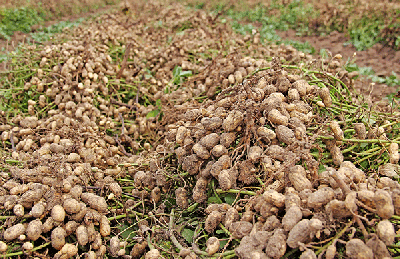
Promising peanut varieties in the pipeline
“Historically, we’ve had some pretty high premiums in Mississippi for high oleic peanuts,” says Jason Sarver, Mississippi State University Extension peanut specialist. “If we can take advantage of those premiums and produce yields comparable to Georgia O6G, it’s a win-win situation.”

Mississippi growers have some really good peanut varieties to choose from — and better ones are on the way, says Jason Sarver.

JASON SARVER
Particularly promising are high oleic varieties, which are increasingly preferred by manufacturers because of their much longer shelf life.
“Historically, we’ve had some pretty high premiums in Mississippi for high oleic peanuts,” he said at the annual meeting of the Mississippi Peanut Growers Association. “If we can take advantage of those premiums and produce yields comparable to Georgia O6G, it’s a win-win situation.”
Stay current on what’s happening in Mid-South agriculture: Subscribe to Delta Farm Press Daily.
Sarver, who is assistant Extension and research professor of plant and soil sciences at Mississippi State University and the state’s peanut specialist, says TUFRunner 511, “was outstanding in every test we had, with a yield of 5,609 pounds. I was only able to get about 50 pounds of seed for our trials, but it looked really good, and it could be a strong player for us in the future if it performs as well in field-scale situations.”
Those yields compare to Georgia 06G, the standard in most areas of the state outside the Delta, with 4,780 pounds; Georgia 13M at 4,766 pounds; Georgia 09B at 4,655 pounds; Tifguard at 4,301 pounds; FloRun 107 at 4,312 pounds; Florida 07 at 5,011 pounds; Georgia 12Y at 5,022 pounds; and TUFRunner 727 at 5,069 pounds.
Important upcoming events: Delta Farm Press Calendar of Events
Another study, Sarver says, looked at the impact of planting date on yield. “We had plantings through June 3 at Starkville and Poplarville, and we found a pretty consistent and significant yield loss for peanuts planted May 20 and beyond.”
In comparisons of single row and twin row peanuts, he says, “We saw a consistent 300 pound to 400 pound yield advantage for twin rows versus single rows.” But, “If you’re already planting single row peanuts, you have to consider price and acreage to determine if that difference warrants the investment in a twin row planter.”
Rotation a beneficial practice
In response to grower questions about rotations, Sarver cites work he did with Scott Tubbs in Georgia, comparing continuous peanuts to one-, two-, three-, and four-year rotations. “For continuous peanuts, incidence of leaf spot was significantly higher,” he says.

A THREE-YEAR rotation is a beneficial practice for peanuts.
In 2013 yield tests, continuous peanuts yielded about 2,600 pounds per acre, compared to 4,600 pounds in a two-year rotation; 4,800 pounds in a three-year rotation; and 4,900 pounds in a four-year rotation.
“In the past, we may have been able to get by with continuous peanuts with only a few problems,” Sarver says, “but based on what we saw in fields in 2014, I don’t think that’s going to be the case any more. Considering our history, I think a three-year rotation will keep us in pretty good shape.”
For cotton and corn growers who have root knot nematode problems, rotation with peanuts can help reduce populations of the pest, he says. “A rotation with peanuts can go a long way toward eliminating these nematodes.”
In harvest tests with three different cultivars (Georgia 06G, Georgia 13M, and Georgia 12Y), he says, peanuts were dug at 139 days and 153 days. “Waiting two weeks gave us about a 400 pound increase in Georgia 13M and 200 pounds for Georgia 12Y. We’ve seen more striking numbers than that in the past, but it again illustrates the importance of optimum maturity and digging time.”
Efforts are in progress, Sarver says, to get weather stations installed around the state to monitor growing degree days, precipitation, and irrigation in order to help growers make better decisions about when to dig peanuts.
“A program developed by Diane Rowland at the University of Florida has been very successful across the Southeast. We already have the infrastructure in place in Mississippi to use this — it’s just a matter of getting the weather stations installed, which we’re hoping to do this season.
“It’s not always an easy task to determine proper digging time, and this numbers-based system will be another tool to help growers in making those decisions.”
About the Author(s)
You May Also Like



